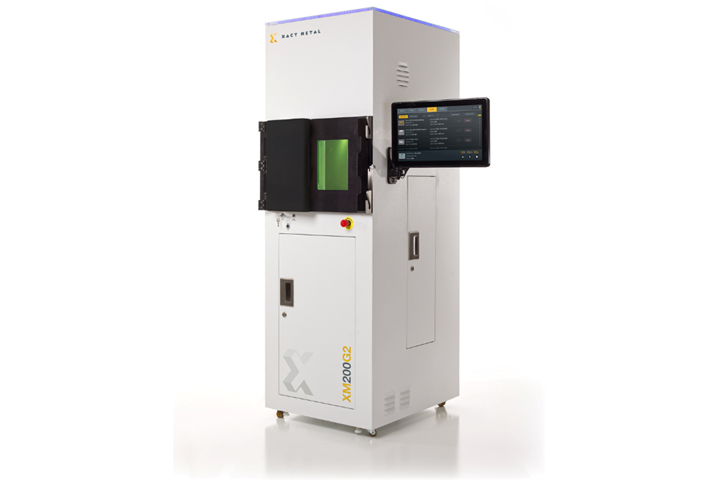3D Metal Printing Adoption Enables Rapid Design Changes, Internal Feature Inclusion, Quality Components
Xact Metals’ 3D printing technologies and services are offered for quick, efficient and cost-effective moldmaking and tooling production.

Photo Credit: Xact Metal
Xact Metal promotes its services for affordable 3D metal printing, noting that the process offers high value to moldmaking and tooling applications, such as the design of injection mold tooling inserts.
Rapid design changes are quickly incorporated by simply converting from a CAD file to the 3D metal printer build file, the company says; new inserts are often printed in less than 24 hours. In addition, the printed insert is said to only uses the metal volume required, virtually eliminating scrap metal, and the 3D metal printer can be left unattended during the printing process, ensuring cost savings.
Additive manufacturing (AM) enables the inclusion of internal features such as conformal cooling channels. During the insert design stage, AM principles are applied to optimize the final insert design without sacrificing part performance. Internal channels are converted from circular to diamond shaped and internal overhangs are reported to be 45º or greater to eliminate the need for internal supports.
Metal powder-bed fusion (also termed selective laser melting and direct metal laser sintering) does not require debinding or sintering, Xact Metal says. The as-printed insert has final dimensional tolerances of ±0.2%. The as-printed insert can be heat treated, finish machined, ground and/or plated just as if it had been machined from a solid block of steel. The company guarantees that the final insert will also readily meets the required performance criteria.
Related Content
-
MMT Chats: The Connection Between Additive Manufacturing Education and ROI
This MMT Chat continues the conversation with Action Mold and Machining, as two members of the Additive Manufacturing team dig a little deeper into AM education, AM’s return on investment and the facility and equipment requirements to implement AM properly.
-
MMT Chats: 4 Keys to a Successful Mold-Building Operation: Innovation, Transparency, Accessibility and Relationship
MoldMaking Technology Editorial Director Christina Fuges chats with Steve Michon, co-owner of Zero Tolerance in Clinton Township, Michigan, about the excitement of solving problems, the benefits of showing gratitude, the real struggle with delegation and the importance of staying on top of technology. This episode is brought to you by ISCAR with New Ideas for Machining Intelligently.
-
3D Printing Enables Better Coolant Delivery in Milling Operations
Just like 3D printing enabled conformal cooling channels in molds, additive manufacturing is now being used to optimize coolant delivery in cutting tools.












